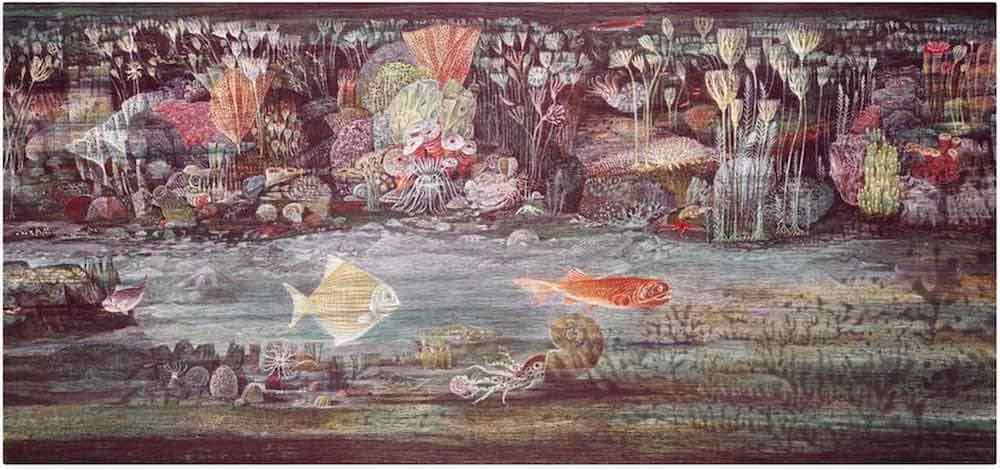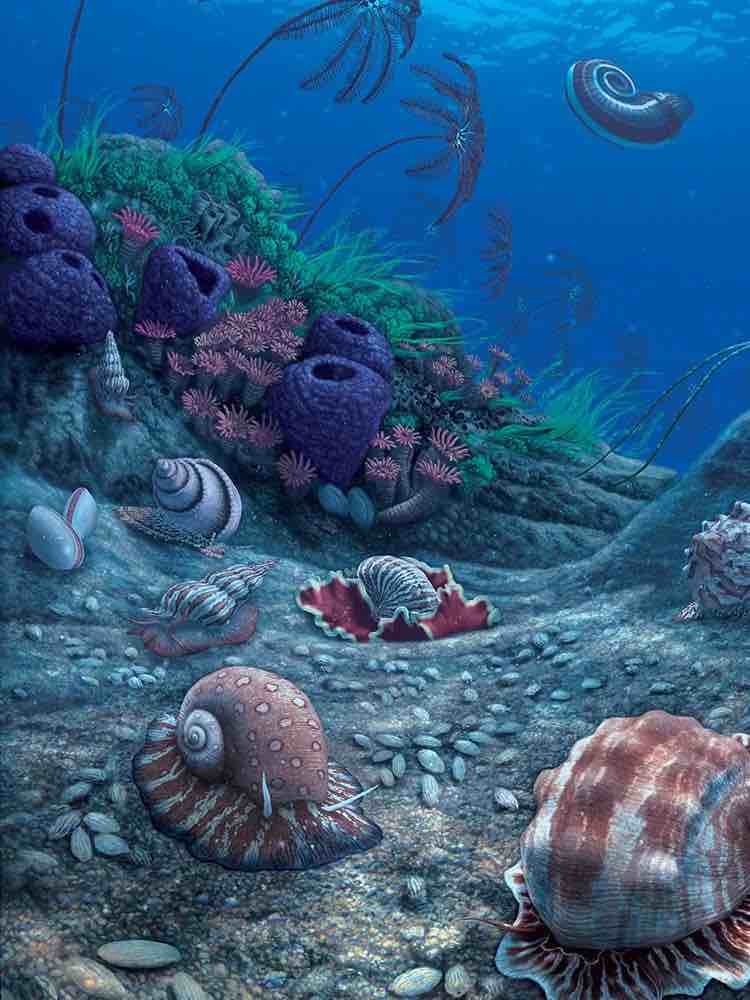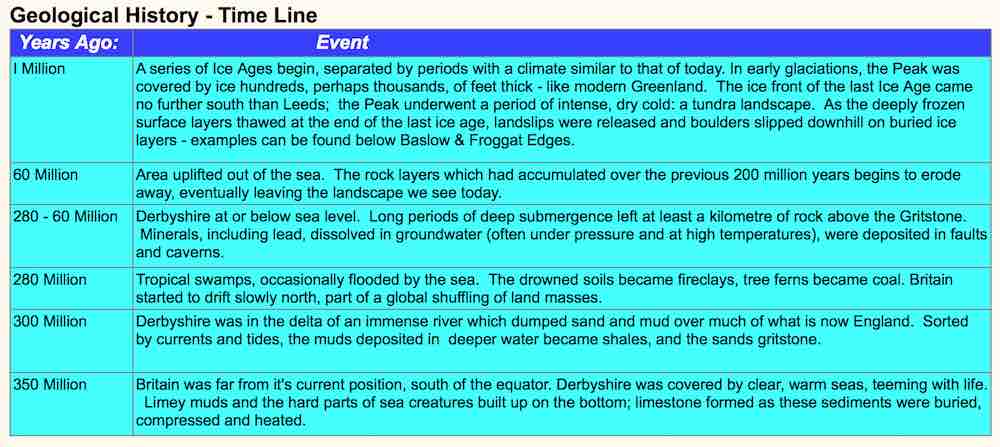|
Roughly 360 million years ago the District both White and Dark was immersed by a shimmering translucent, warm, shallow sea packed with microscopic hard shelled creatures.
The Ancient History Of The Peak District
By MICHAEL HOLLOWAY BSc, MSc
Roughly 360 million years ago the District both White and Dark was immersed by a shimmering translucent, warm, shallow sea packed with microscopic hard shelled creatures. The Lower Carboniferous began 355 million years ago and ended 325 million years ago. Much of Britain was covered by this warm tropical sea. The signature Derbyshire limestone synonymous with the area was formed during this period by the trillions of sea creatures, plants and shells. The undulating Derbyshire landscape was set in stone during this period and later moulded, scalped, sculpted and carved by land collapse, glaciers and receding seas. So next time you're in Bakewell, Matlock, Buxon or Ashbourne remember, there was a sea above your head here once!
An artists depiction of a shallow sea during the carboniferous.
In these warm tropical seas, free of silt, the shells of microscopic invertebrates accumulated on the sea bed and formed a lime based series of clays. A similar environment can be found in the Caribbean to this day. Usually the shells and bone fragments would decay and rain into microscopic pieces. However, sometimes waves or currents buried an entire animal, and lost to the processes of saltwater decay, such entities are preserved as fossils - usually crinoids, but occasionally trilobites and shellfish. We've all seen them, they're all over the peak district. Usually for sale in gift shops and tourist centres. Well, that's where they come from, remarkable eh? More on this come.
CategoriesAll ArchivesSeptember 2023
0 Comments
Your comment will be posted after it is approved.
Leave a Reply. |
Peak Soap
The Original Bakewell Soap Co.
Contact : [email protected] | Copyright 2023 © P e a k S o a p Ltd.
P e a k S o a p™ Ltd. is registered in the United Kingdom | Office : Diamond House, Water Street, Bakewell, DE45 1EW | Company No. 11684582
P e a k S o a p™ Ltd. is registered in the United Kingdom | Office : Diamond House, Water Street, Bakewell, DE45 1EW | Company No. 11684582



